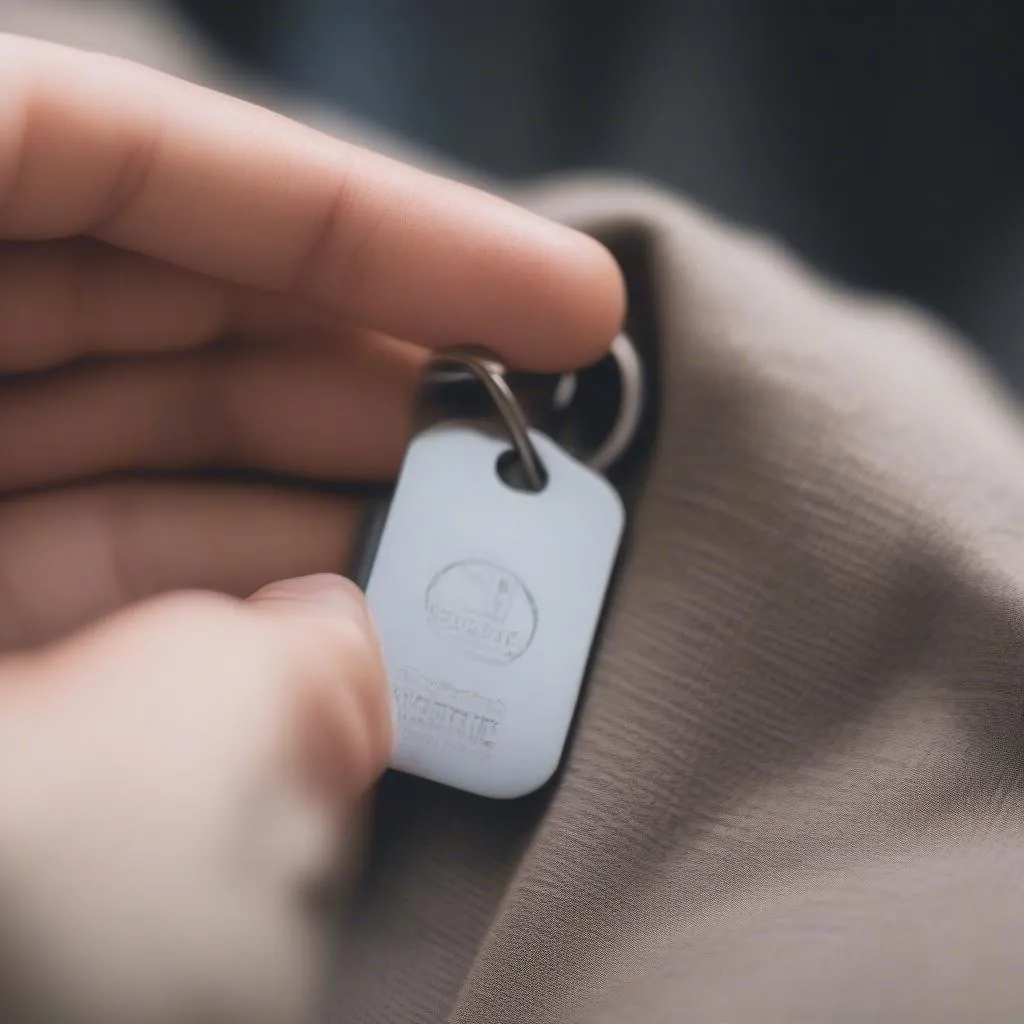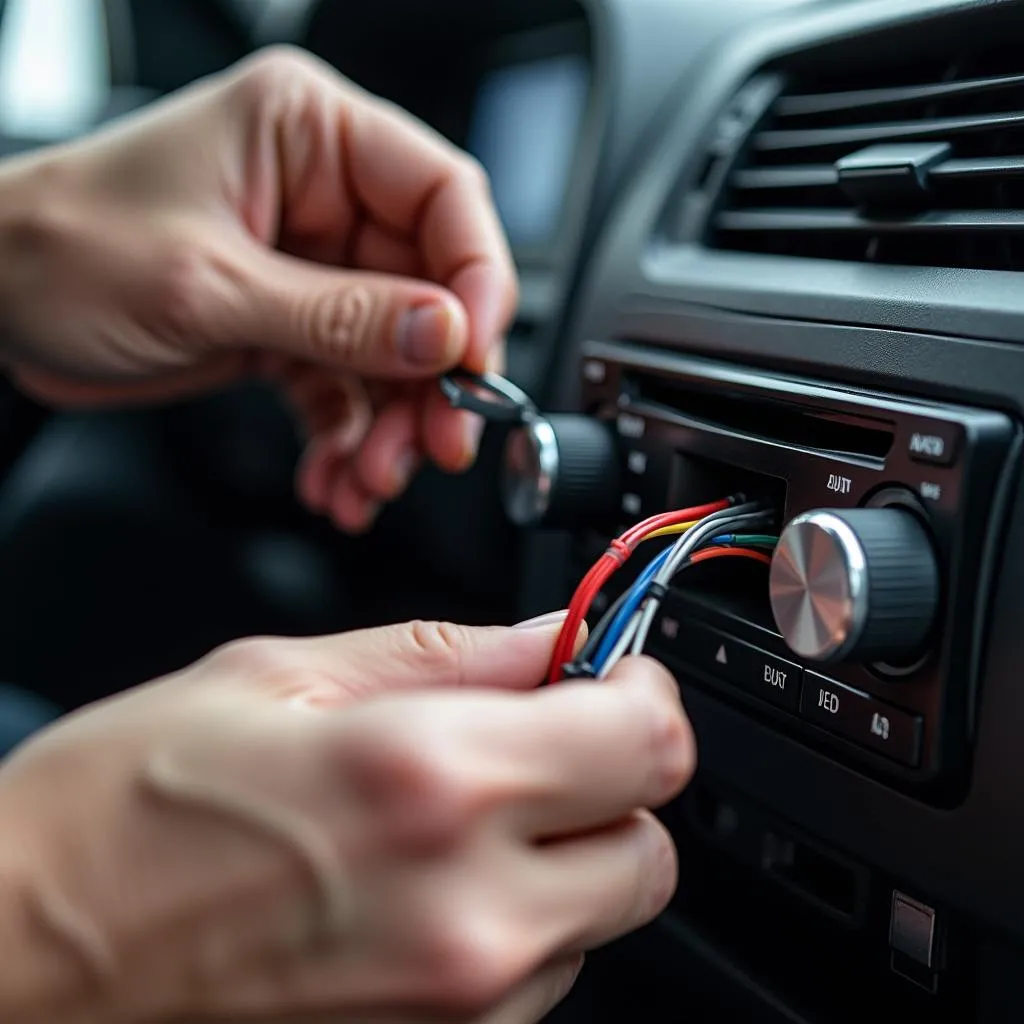You’re rushing to work or an important appointment, and you go to unlock your car, but nothing happens. You press the button on your key fob again and again, but your car remains unresponsive. Your heart sinks as you realize: the battery in your key fob has died. This is a frustrating situation, but don’t panic; there are solutions. This guide will walk you through the steps you can take when your key fob battery dies, helping you regain access to your vehicle and get back on the road.
Common Signs of a Dying Key Fob Battery
Before we dive into the solutions, it’s helpful to recognize the warning signs that your key fob battery is nearing its end. Look out for these indicators:
- Decreased Range: You find yourself standing closer to your car than usual to lock or unlock it.
- Delayed Response: The car takes longer to respond to the key fob’s signal, or you need to press the button multiple times.
- Intermittent Functionality: The key fob works sometimes but not always.
- Dashboard Warning Light: Some vehicles display a warning light on the dashboard when the key fob battery is low.
If you experience any of these symptoms, it’s time to proactively replace your key fob battery to avoid finding yourself stranded.
How to Replace Your Key Fob Battery
Replacing a key fob battery is typically a straightforward process that can be done at home with a few simple tools. Here’s a general guide to follow:
-
Consult Your Owner’s Manual: Your owner’s manual will provide specific instructions tailored to your vehicle model, including the type of battery required.
-
Gather the Necessary Tools: Typically, you’ll only need a small flat-head screwdriver or a coin.
-
Locate the Battery Compartment: Most key fobs have a small battery compartment on the back or side. It may be covered by a small panel that can be pried open gently.
-
Remove the Old Battery: Carefully remove the old battery, noting its orientation (positive and negative sides).
-
Insert the New Battery: Insert the new battery, making sure it’s facing the correct way.
-
Reassemble the Key Fob: Close the battery compartment securely.
-
Test the Key Fob: Test all the buttons to ensure the new battery is working correctly.
What If My Key Fob Still Doesn’t Work?
If you’ve replaced the battery and your key fob is still not functioning properly, there could be other issues at play, such as:
- Faulty Key Fob: The key fob itself may be damaged or malfunctioning.
- Programming Issues: The key fob might need to be reprogrammed to your vehicle.
- Vehicle Receiver Malfunction: The receiver in your car that picks up the key fob signal may have a problem.
In these cases, it’s best to consult a qualified automotive locksmith or your dealership for assistance.
“It’s crucial to ensure your key fob is always in good working order,” says John Smith, Senior Automotive Electrician at ABC Auto Services, “A malfunctioning key fob can be a major inconvenience and even a safety concern.”
Using Your Physical Key
While many modern cars rely heavily on keyless entry, don’t forget that your key fob also contains a physical key. This key can be used to manually unlock your driver’s side door and even start the engine in some cases.
The location of the key release button or mechanism varies by car manufacturer, so refer to your owner’s manual if you can’t find it. Remember, the physical key is a valuable backup option in situations where your key fob battery dies unexpectedly.
Preventing Future Key Fob Battery Drain
While key fob batteries are not designed to last forever, there are steps you can take to prolong their lifespan and reduce the chances of getting caught with a dead battery:
- Avoid Extreme Temperatures: Heat and cold can drain battery life.
- Store Your Key Fob Properly: Avoid storing your key fob in direct sunlight or excessively humid environments.
- Don’t Panic Press: If your car doesn’t respond immediately, avoid repeatedly pressing the key fob button, as this can drain the battery faster.
- Replace the Battery Regularly: Don’t wait for the battery to die completely. Consult your owner’s manual for recommended replacement intervals.
Conclusion
A dead key fob battery can be an unexpected annoyance, but by understanding the signs of a dying battery, knowing how to replace it, and taking preventative measures, you can minimize the inconvenience and stay in control of your vehicle access. Remember, being prepared and informed is key to a smoother driving experience.
Need help with your Subaru Outback key fob battery replacement, Nissan fob key, key fob Tesla, BMW key fob replace battery, or learning how to replace the battery in a Dodge key fob? Check out our other resources for detailed guides on specific car models.


